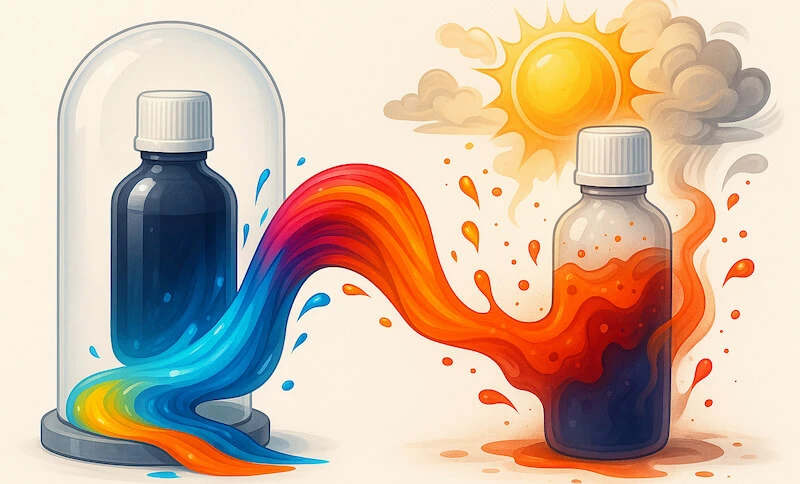Sublimation ink doesn’t just expire based on time — storage conditions have a far greater impact. Temperature swings, humidity, air exposure, and light all influence how long sublimation ink stays usable. Proper storage keeps sublimation ink smooth, chemically stable, and predictable. Poor storage causes thickening, separation, clogged nozzles, and faded color chemistry long before the expiration date.
Sublimation ink is a water-based ink that uses dye-dispersed colorants. These colorants are suspended in liquid carriers along with stabilizers. The chemistry stays balanced only when the ink is stored in a controlled environment. Heat accelerates dye oxidation and solvent evaporation. Cold increases viscosity and causes dye particles to settle. Humidity introduces moisture that dilutes water-based inks. UV light degrades dye molecules. Air exposure causes oxidation and allows solvents to evaporate.
Why Storage Conditions Matter for Sublimation InkSublimation ink remains stable only when the dye particles stay evenly dispersed within the liquid carrier. Temperature, humidity, light, and air exposure all affect this balance. Heat evaporates solvents and accelerates dye oxidation. Low temperatures thicken the ink and encourage dye settling. Humidity introduces moisture into the ink, weakening its color strength. UV exposure breaks the chemical bonds in dye molecules and causes fading. When ink bottles or cartridges are left unsealed, oxygen enters and degrades the dye. Stable storage protects the ink’s chemistry better than the printed expiration date alone.

In this article, you’ll learn how sublimation dyes respond to environmental stress, why unstable storage causes particle separation and color loss, and the exact conditions that protect ink chemistry and maximize shelf life.
| 💡 Although this article focuses on sublimation ink, the same storage principles apply to most printing inks, including pigment, dye-based, and eco-solvent formulations. |
Key Takeaways
Storage directly affects sublimation ink chemistry and usable shelf life.
Sublimation ink lasts longer when temperature, humidity, light, and air exposure are controlled.
Heat accelerates ink degradation.
High temperatures cause solvent loss and dye oxidation, shortening usable life.
Cold affects flow and particle stability.
Low temperatures thicken sublimation ink and increase dye settling, leading to clogs and inconsistent color output.
Humidity introduces contamination.
Moisture dilutes the water-based carrier and destabilizes dye dispersion.
Light weakens dye molecules.
UV exposure breaks down sublimation dyes and causes fading before the ink is even used.
Air exposure causes oxidation.
Leaving sublimation ink unsealed evaporates solvents and accelerates color degradation.
Stable storage equals longer shelf life.
Controlled conditions protect sublimation dye particles far better than the expiration date alone.
